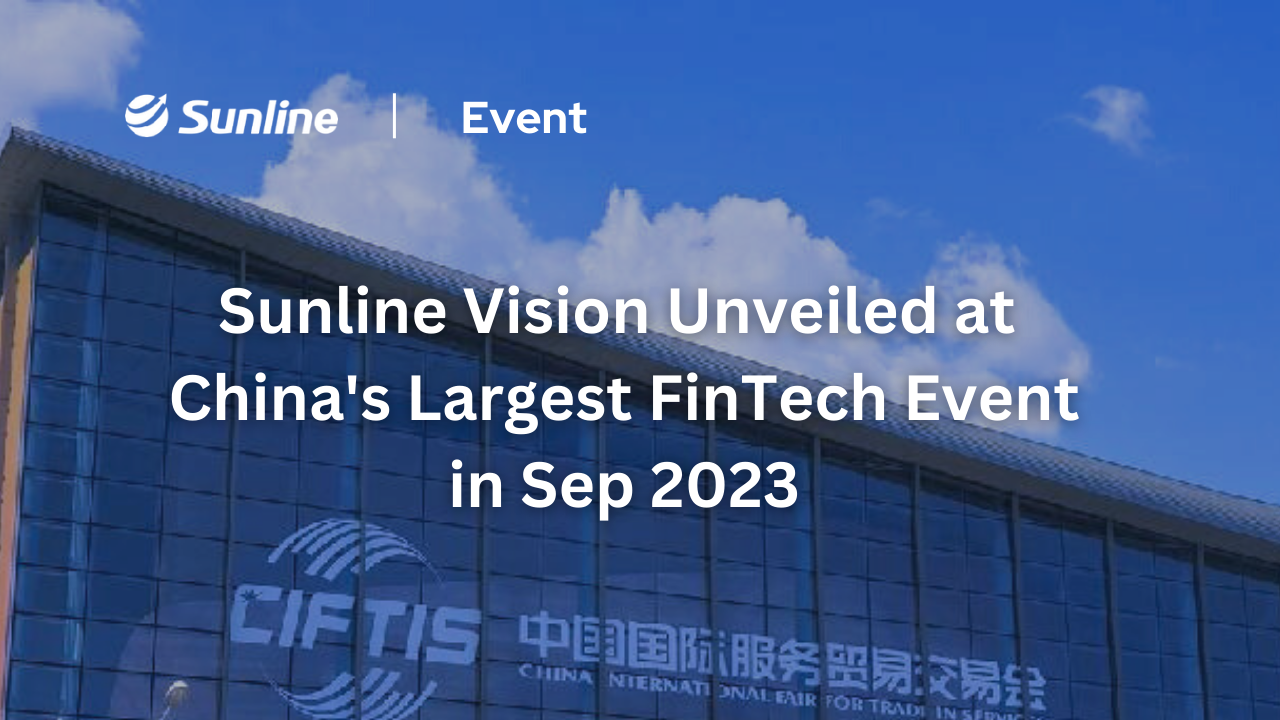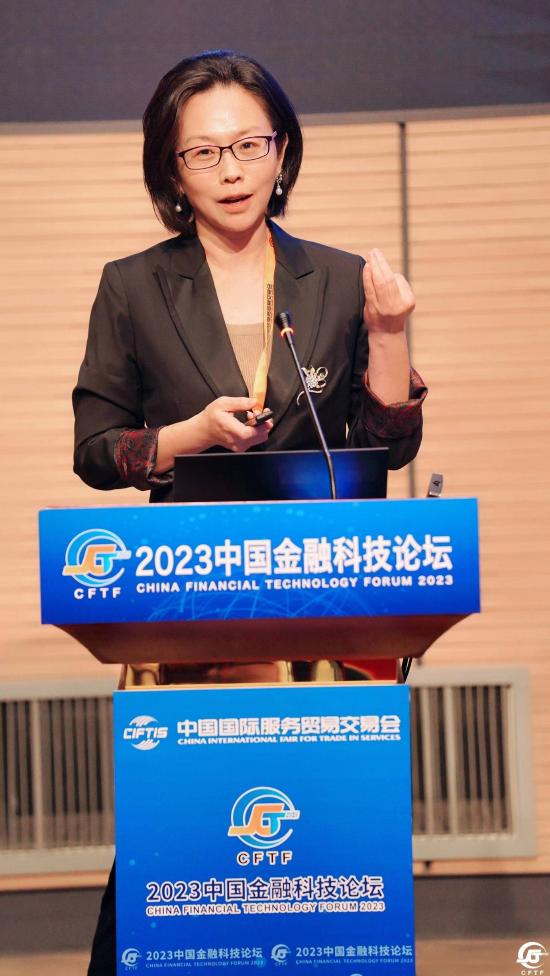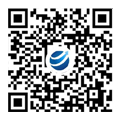
Beijing, September 2, 2023 - On September 2, 2023, the China International Fair for Trade in Services (CIFTIS) took place in Beijing. Sunline was invited to attend this forum to showcase how it is driving the digital transformation and development of the financial industry by creating a new paradigm in financial technology.
As part of the China International Fair for Trade in Services(CIFTIS), the "2023 China FinTech Forum(CFTF2023)" brought together professionals from domestic and international regulatory bodies, industry associations, financial institutions, and corporate executives. They gathered to discuss the trends in financial technology development and share the latest technological applications and practical experiences. Jacqueline Niu, Vice President of Sunline, delivered a keynote speech titled "Creating a New Paradigm in Financial Technology to Unleash Corporate Digital Productivity" at this forum. She shared Sunline's innovative strategies and profound insights into navigating the financial technology revolution.
The CIFTIS event marked the debut of Sunline's new paradigm in financial technology, representing over two decades of in-depth insights and continuous innovation in the industry. It aims to provide new perspectives for the digital transformation and development of the financial sector.

Jacqueline Niu, Vice President of Sunline
The following is an excerpt from the speech:
"Today, my presentation revolves around the theme 'Creating a New Paradigm in Financial Technology to Unleash Corporate Digital Productivity.' I will delve into this topic in three parts: the background of the new era of financial technology transformation, our breakthrough strategy, and how to construct a new paradigm in financial technology.
The Era of Transformation Is Here
Through over two decades of development, Sunline has gained profound insights into the five major trends facing the banking industry:
1. Customer-Centric Demand: In the era of internet platforms and intensified competition, customers and markets demand rapid adaptability from banks. From a banking perspective, agile delivery is essential in financial technology.
2. Operational Environment: With the arrival of the low-interest-rate era, banks have shifted from scale development to efficiency in operations. Similarly, the construction of financial technology now emphasizes end-to-end lean management for improved quality and efficiency.
3. Technological Innovation: As technologies like AIGC and generative AI proliferate, the era of intelligent technology has arrived. The convergence of new technologies like large-scale models, high computing power, and cloud-native architectures will comprehensively reshape enterprise production modes, release productivity, and enhance efficiency.
4. Digital Development: The systemic and holistic push for digital transformation necessitates unified planning and overall management for banks. This entails bridging the entire banking system, processes, and data.
5. Business-Technology Relationship: In the digital era, the relationship between business and technology is gradually merging. There is an urgent need for business and technology to genuinely integrate through the transformation of financial technology models. The convergence of business and technology is not a new proposition and has been discussed for many years. Many banks have attempted it, with more failures than successes. However, today we see that deep integration between business and technology is an inevitable trend. If it was just an experiment before, at this juncture, we must have a transformative approach to genuinely integrate business and technology at both the strategic and implementation levels, enhancing overall efficiency."
Changing the Game Plan
These trends are not just technological shifts but also comprehensive transformations in business models, customer demands, and market environments. Traditional approaches are no longer sufficient to respond to today's financial revolution. Instead, financial technology is calling for five new requirements: enterprise-level thinking, agility, efficiency, intelligence, and flexibility.
Based on this understanding, Sunline has put forward a completely new financial technology transformation strategy. To genuinely transform financial technology, we must build a systematic "1=3+3" paradigm that helps companies shape their core competitiveness.
The construction approach of this new paradigm is as follows: In the context of five new requirements for transformation in the new era (enterprise-level, agility, efficiency, intelligence, and flexibility), we aim for one overarching goal. This goal is to create a new financial technology delivery model that is deeply integrated and collaborates efficiently between business and technology, with a focus on delivering current value (meeting business needs) and future value (reuse and evolution). This will enhance the overall efficiency and effectiveness of financial technology.
The three major transformations in delivery model include: planning and design, development methods, and delivery outcomes.
The three major action lines for this transformation are: new mechanisms, new platforms, and new technologies to achieve a new financial technology delivery model.
Mastering the Paradigm
Building the new paradigm requires four key dimensions: new platforms, new mechanisms, new models, and new technologies. New technologies empower new mechanisms and new platforms along the entire process to comprehensively improve quality and efficiency.
New Platforms
The new platforms provide integrated toolchains to support the operational implementation of new mechanisms. These platforms encompass four key capabilities: financial-grade cloud-native technology infrastructure, integrated process and technology management, digital asset modeling, and end-to-end collaborative management across the entire organization.
New Mechanisms
The most critical aspect of the new financial technology paradigm is the new mechanisms. These are a set of business and technology operation norms built using an enterprise architecture mindset. They cover the entire process of efficient collaborative operation, from demand initiation to software's full lifecycle, including high-quality requirement specifications, business modeling, domain modeling, design decomposition, and intelligent coding. Business modeling standardizes, structures, and models business requirements. Domain modeling extends to microservice design and forms the foundation for high-quality development and continuous evolution. Design decomposition follows clear service layering and code structure requirements, ensuring standardized and service-oriented design. Achieving these objectives results in standardized, structured, and model-based assets, which fundamentally resolve the complexity of application software. AI can be effectively applied when working within a standardized structural environment, enabling efficient coding and the full realization of its capabilities. Therefore, AI development starts with thorough deconstruction and structuring of requirements and analysis design
New Models
New models encompass the transformations in planning and design, development methods, and delivery outcomes. In planning and design, there is a shift from localized development to global planning, capability development, and redesigning analysis. In development methods, the move is towards end-to-end integrated operations and AI-intelligent development. For delivery outcomes, the shift is from system delivery to "asset" delivery. This means transitioning from a delivery model disconnected from documents and systems to a model that is standardized, structured, and continuously maintained, ensuring transparent mapping between requirements, systems, and document assets. These assets are observable, traceable, and also capture human experience and expertise, addressing issues like continuous iterative evolution, rapid operational positioning, and personnel role changes.
New Technologies
The New technologies act as accelerators for the entire system's multiplier effect.
Key Takeaways
In conclusion, we believe that this new paradigm will bring three significant values to the world of financial technology: efficiency, effectiveness, and valuation.
● Efficiency: By integrating business research and development operations, we will enhance cross-organizational collaboration efficiency across the entire value chain.
● Effectiveness: This includes considering enterprise-level perspectives, avoiding redundant investments, and promoting continuous value through clear layering, domain modeling, high-quality assets, and intelligent development.
● Valuation: This covers the increase in value from standardized, structured, and model-based assets that improve requirement quality. It also considers the impact of business and technology integration methods and the infusion of new technologies.
As we look to the future, we are confident that this new paradigm will unlock boundless possibilities for the world of financial technology. Sunline is committed to showcasing its financial technology strength and innovation capabilities on a global scale, as demonstrated by its participation in the China International Fair for Trade in Services. By staying attuned to the trends and changes in the financial industry, Sunline has continuously updated its technology and successfully implemented projects, earning recognition and praise from numerous financial institutions worldwide. In the face of the challenges of the new era, Sunline will explore the infinite possibilities of this new era through innovation and practical application of the new financial technology paradigm.
Sunline is dedicated to the relentless pursuit of excellence in financial technology and will continue to be a driving force in shaping the future of the financial industry."
About Sunline
Sunline is the leading banking software and technology services company in China. Established in 2002, Sunline has become a global financial technology leader, serving over 800 banking and finance customers with a team of more than 6000 employees worldwide. Headquartered in Shenzhen, Sunline has expanded its presence internationally with offices in Hong Kong, Malaysia, Thailand, Indonesia, Singapore, and the Philippines. Sunline is known for its continuous innovation, strong customization ability, and commitment to excellence in the financial technology industry.
Sunline's rich product portfolio and advanced technologies empower innovation in the financial industry. With a focus on distributed, microservices, and cloud platforms, Sunline remains at the forefront of cutting-edge technologies. The company has received numerous accolades for its innovation, including IDC China Top 50 Fintech, Global Brand Award Most Innovative Fintech Company, Forbes China 50 Most Innovative Companies, and CB Insights China's Top 50 Fintech in 2020, among others. Sunline is dedicated to helping businesses optimize user experiences, accelerate digital transformation, and navigate the evolving landscape of financial technology.




